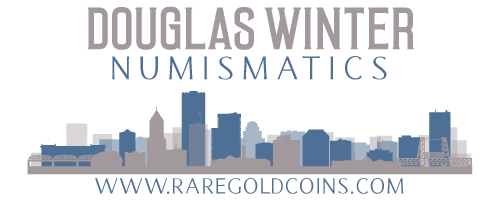Philadelphia No Motto Half Eagles & Eagles
/I’m beginning to gain a new-found appreciation for --gasp!-- No Motto half eagles and eagles from the Philadelphia mint. Read on for some thoughts about these coins and why I’m beginning to see them in a new light. As I’ve mentioned more than once, No Motto half eagles and eagles from Philadelphia have never ranked high on the list of popular coins in the world of DWN. I’ve found these coins to be somewhat mundane and boring and haven’t really bothered all that much with them. So what’s happening to change my mind?
I love originality. It saddens me to see that such a large percentage of branch mint gold issues have been scrubbed and processed and now look like Frankencoins. Ironically, because of their lack of popularity, the major coin doctors have (temporarily) ignored No Motto Philadelphia half eagles and eagles. In essence, the connoisseur of truly original mid-19th century coins has almost nowhere to turn other than Philadelphia.
This was really clear to me when I was viewing the recent auctions in Milwaukee as part of the ANA festivities. I disliked most of the branch mint coins. But I saw a decent number of No Motto Philadelphia half eagles and eagles in the AU50 to MS63 range that were choice, original and quite attractive. Had my anti-Philadelphia gold prejudice begun to fall by the wayside?
Now, before you drop your jaw on the table and think that I’ve committed numisheresy, let me expand on what I just stated. I’m certainly not abandoning my strong interest in branch mint coins and starting to focus on Philadelphia coins; that’s far from the case. What I am realizing, though, is that these Philly issues may be more interesting than I thought.
Here’s a few reasons why I like these coins:
-
The collector of average means can put together nice date runs from the 1840’s and the 1850’s. As an example, there are really no rare Philadelphia half eagles struck between 1839 and 1861. Nearly every date can be found in nice AU55 to AU58 for well under $2,000 (in some cases under $1,000). If you can’t afford a nice collection of Charlotte, Carson City, Dahlonega or New Orleans gold, you can still participate in the Philadelphia gold market.
The coins are well made and are found with original surfaces with greater frequency than their branch mint counterparts. For the collector who insists on originality, you will find many more attractive pieces than in the branch mint series.
This is a virtually uncollected area. Good news: you have very little competition. Bad news: when you go to sell your collection, no one may care.
If you like varieties, this is a very fertile area. Other than Harry Bass, almost no one has ever searched through these issues for major varieties and I’m willing to bet some very interesting coins are awaiting discovery.
No Motto Philadelphia half eagles and eagles are close to a century older than Indian head half eagles and eagles yet they offer the gold coin collector a lot more bang for the buck. $2,500 won’t buy you very much in the way of an interesting or rare Indian Head half eagle. But it will buy you a pretty scarce Liberty Head half eagle from the 1840’s.
Unlike some of the 20th century gold series, No Motto Philadelphia gold has never really been promoted or heavily marketed. Price levels have stayed flat for many years and there are some real sleepers in both the half eagle and eagle series awaiting discovery by the student of the series. As I stated above, I’m not planning on abandoning my focus on branch mint gold coins any time soon. But after some careful thinking, I’ve decided that maybe No Motto Philadelphia gold coins aren’t the Numismatic Pariah that I thought they were for many years.













